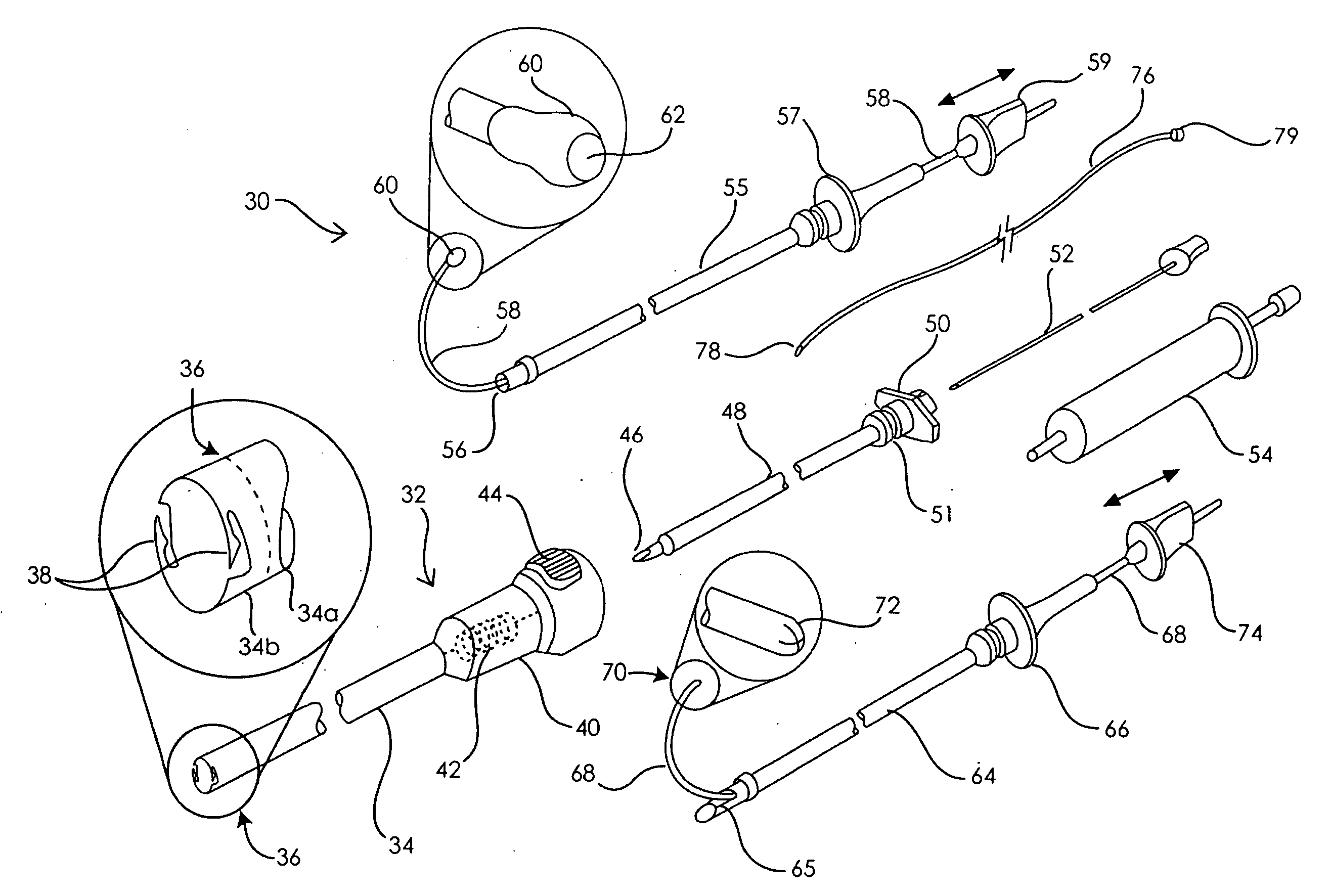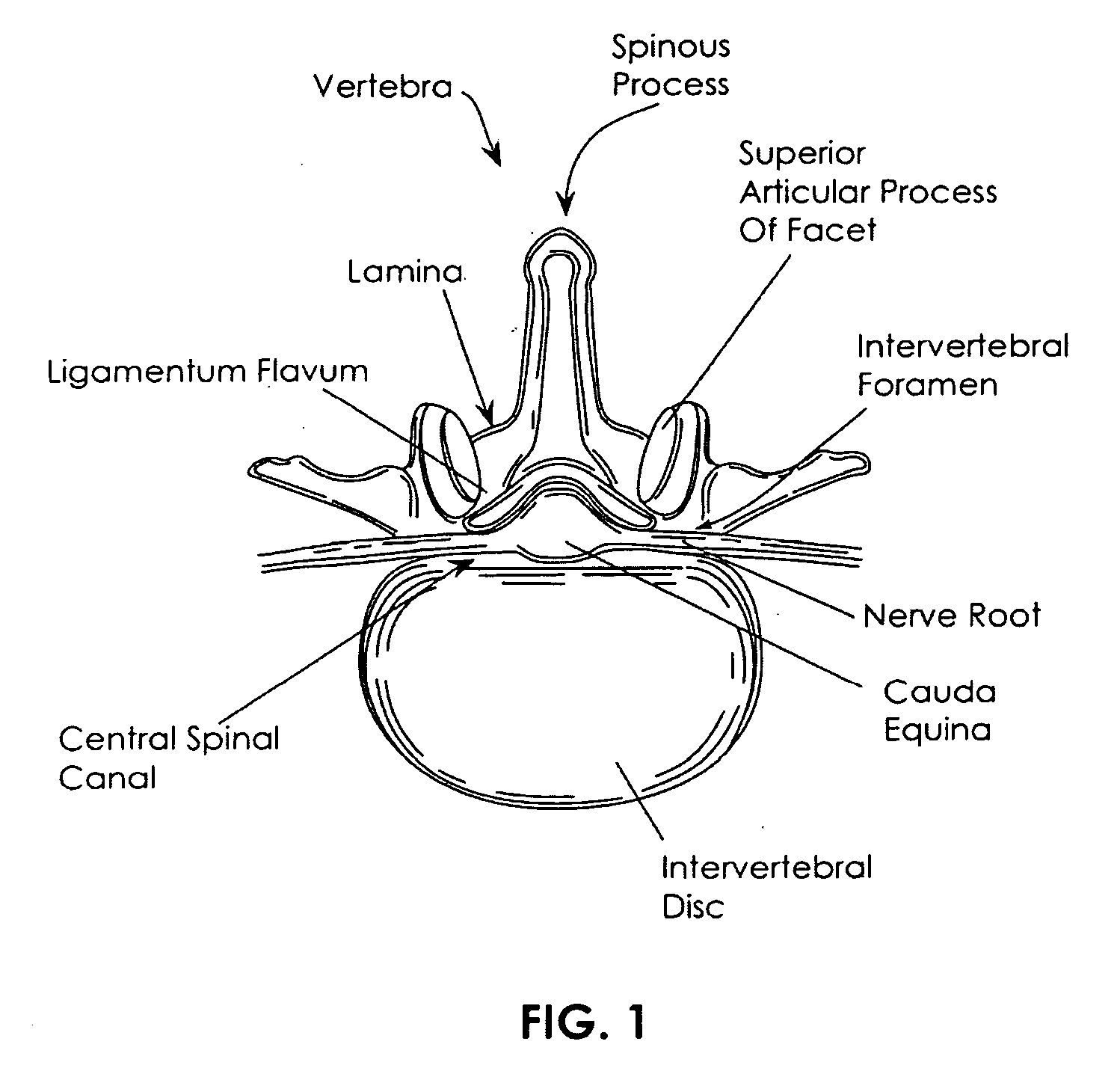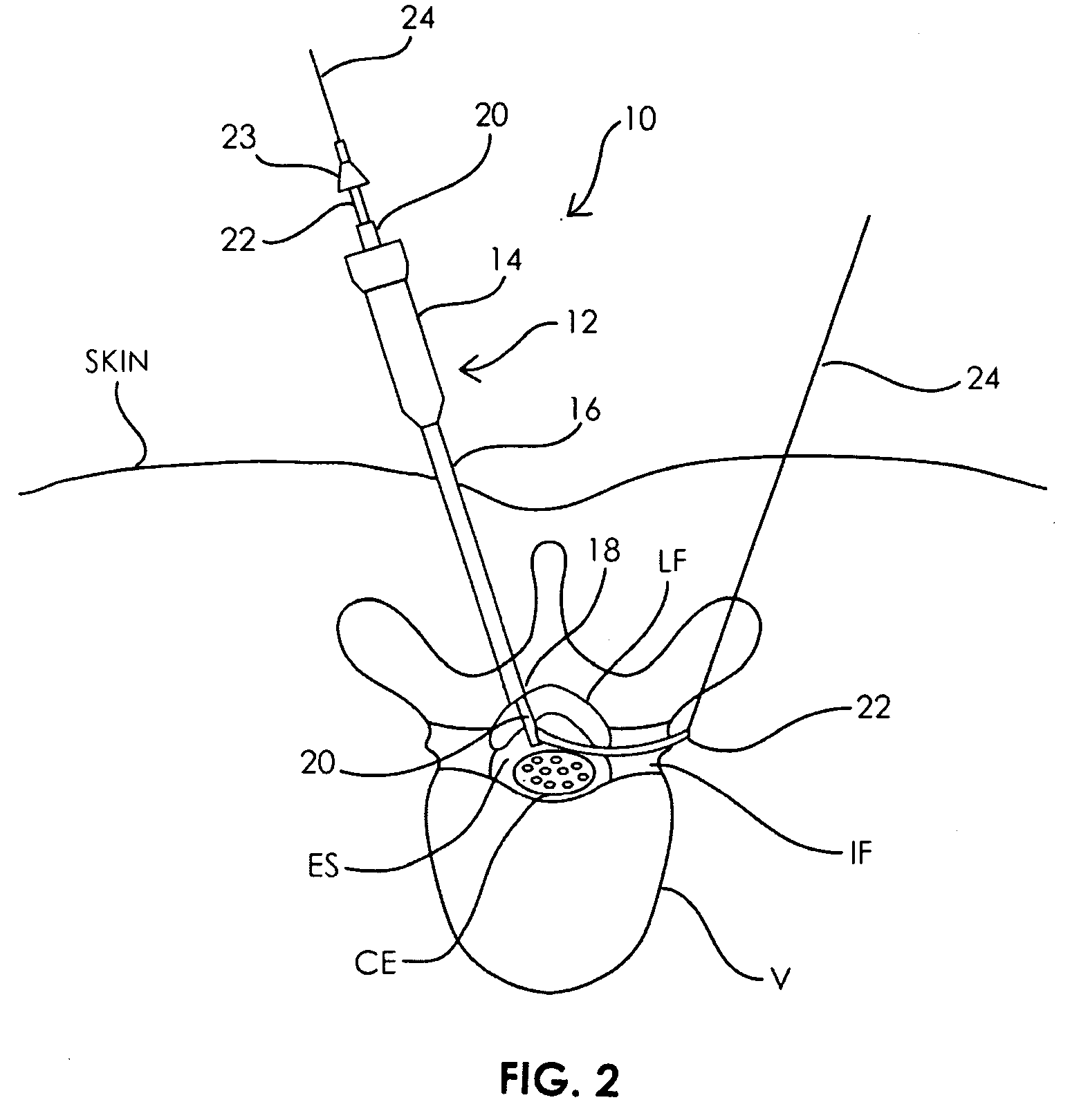Spinal access system and method
a technology of access system and spine, applied in the field of spinal access system and method, can solve the problems of many challenges, compounded challenges, and developed less invasive surgical methods and devices
- Summary
- Abstract
- Description
- Claims
- Application Information
AI Technical Summary
Benefits of technology
Problems solved by technology
Method used
Image
Examples
Embodiment Construction
[0086]Described herein are systems, devices, tools and methods for accessing a patient's spine, and particularly a patient's epidural space. For example, described herein are tissue locking cannulas, ligamentum flavum access tools, and systems including one or both of these in addition to guide probes, guidewires, and tissue modification devices, particularly bimanual tissue modification devices.
[0087]In various embodiments, the systems, devices, and methods may be used in percutaneous, minimally invasive or less invasive surgical procedures. Alternatively, these devices, systems and methods may also be advantageous for use in an open surgical setting. While these devices, systems and methods are described primarily with reference to their uses in the spine, in some embodiments they may also be useful for accessing other parts of the body in percutaneous, minimally invasive and / or less invasive surgical procedures.
[0088]With reference now to FIG. 2, a cross-sectional view of a spine...
PUM
 Login to View More
Login to View More Abstract
Description
Claims
Application Information
 Login to View More
Login to View More - R&D
- Intellectual Property
- Life Sciences
- Materials
- Tech Scout
- Unparalleled Data Quality
- Higher Quality Content
- 60% Fewer Hallucinations
Browse by: Latest US Patents, China's latest patents, Technical Efficacy Thesaurus, Application Domain, Technology Topic, Popular Technical Reports.
© 2025 PatSnap. All rights reserved.Legal|Privacy policy|Modern Slavery Act Transparency Statement|Sitemap|About US| Contact US: help@patsnap.com



